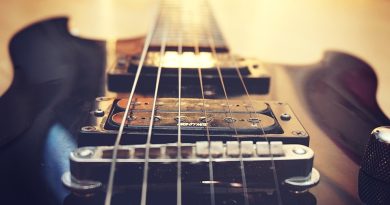Mastering Finger Independence: Essential Guitar Tips
Mastering Finger Independence: Essential Guitar Tips
Playing the guitar is a complex skill that requires the coordination and independence of all four fingers on both hands. Whether you are a beginner or an experienced guitarist, mastering finger independence is essential for improving your playing technique and overall musicality. In this article, we will discuss some tips and exercises to help you develop better finger independence on the guitar.
Understanding Finger Independence
Before delving into specific tips and exercises, it is important to understand the concept of finger independence in the context of guitar playing. Finger independence refers to the ability of each finger to move independently of the others, allowing you to play different notes simultaneously or in quick succession. This skill is crucial for executing complex chord shapes, melodic lines, and intricate fingerstyle patterns on the guitar.
Tip #1: Practice with Purpose
One of the most effective ways to improve finger independence on the guitar is to practice with purpose. Set specific goals for each practice session, such as focusing on a particular chord progression, scale pattern, or fingerstyle exercise. By targeting specific areas of weakness and working on them consistently, you can gradually improve your finger independence and overall proficiency on the instrument.
Tip #2: Start Slow
When working on finger independence exercises, start slow and focus on precision and accuracy rather than speed. Begin by practicing basic exercises such as chromatic scales, finger rolls, and fingerstyle patterns at a comfortable tempo, paying close attention to the movement and placement of each finger. As you become more comfortable with the exercises, gradually increase the speed while maintaining control and accuracy.
Tip #3: Use a Metronome
Utilizing a metronome is a valuable tool for developing finger independence and improving your timing and rhythm. Set the metronome to a comfortable tempo and practice playing various exercises and patterns in time with the beat. This will help you develop a strong sense of timing and coordination between your fingers, ultimately enhancing your overall musicality on the guitar.
Tip #4: Focus on Individual Fingers
To improve finger independence, it is important to focus on each finger individually and develop its strength, dexterity, and coordination. Incorporate exercises that target specific fingers, such as finger rolls, trills, and stretching exercises, to isolate and strengthen each digit. By developing the independence of each finger, you will be able to play more complex and demanding passages with greater control and accuracy.
Tip #5: Experiment with Different Fingerings
Experimenting with different fingerings and techniques can help you develop a more versatile and adaptable playing style. Try using different combinations of fingers to play chords, scales, and arpeggios, and explore various fingerstyle patterns and techniques to expand your musical vocabulary. By experimenting with different fingerings, you can discover new ways to approach familiar melodies and develop a more creative and expressive playing style.
Exercise #1: Chromatic Finger Exercises
Chromatic exercises are a great way to improve finger independence and dexterity on the guitar. Start by placing your index finger on the first fret of the low E string and play each fret in succession with your other fingers (1-2-3-4). Repeat this pattern on each string, ascending and descending the fretboard, focusing on maintaining a consistent tempo and clear articulation.
Exercise #2: Finger Rolls
Finger rolls are another effective exercise for developing finger independence and strengthening each digit. Place your fingers on adjacent frets of a single string and roll them in succession, starting with your index finger and moving towards your pinky. Practice rolling up and down the fretboard, focusing on maintaining a smooth and fluid motion with each finger.
Exercise #3: Trills
Trills are a challenging yet rewarding exercise for improving finger independence and speed on the guitar. Start by placing your index and middle fingers on adjacent frets of a single string and alternate between them rapidly, focusing on maintaining a consistent tempo and even tone. Practice trills on different strings and frets to develop dexterity and coordination between your fingers.
Conclusion
Mastering finger independence is a crucial skill for becoming a proficient guitarist and expanding your musical capabilities on the instrument. By practicing with purpose, starting slow, using a metronome, focusing on individual fingers, and experimenting with different fingerings, you can develop better coordination, dexterity, and control in your playing. Incorporate the exercises and tips outlined in this article into your practice routine to enhance your finger independence and take your guitar playing to the next level.






